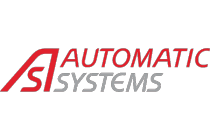Top 3 Drivers of the Global Automotive Torque Sensor Market | Technavio
Technavio market research analysts forecast the global automotive torque sensor market to grow at a CAGR of close to 4% during the forecast period, according to their latest report.
This press release features multimedia. View the full release here: http://www.businesswire.com/news/home/20180103005464/en/

Technavio has published a new market research report on the global automotive torque sensor market 2017-2021 under their automotive library. (Graphic: Business Wire)
The report further segments the global automotive torque sensor market by vehicle type (passenger vehicles and commercial vehicles) and by geography (the Americas, APAC, and EMEA).
Avail Technavio’s Year-End Special offer: Get 50% off on this report and all other reports covering industries like ICT; energy; food and beverage; healthcare and life sciences; automotive; industrial automation; education; and many more. Offer valid only from Dec 18 – Jan 7.
Technavio analysts highlight the following three market drivers that are contributing to the growth of the global automotive torque sensor market:
- Increasing demand for high-performance vehicles
- Penetration of EPS system in passenger vehicles and LCVs
- Increasing demand for automatic transmission vehicles
Looking for more information on this market? Request a free sample report
Technavio’s sample reports are free of charge and contain multiple sections of the report including the market size and forecast, drivers, challenges, trends, and more.
Increasing demand for high-performance vehicles
The global automotive industry is witnessing a steady increase in demand for high-performance vehicles. With the increase in disposable income, consumers are now eager to spend more on luxury vehicles such as high-performance vehicles. Automotive manufacturers are also investing in the development of low-cost, high-performance vehicles to expand their consumer base. For instance, the American automobile manufacturer Ford introduced high-performance models of two of its highest selling vehicle models Fiesta in 2014 and Focus in 2016.
According to Amey Vikram, a lead analyst at Technavio for automotive electronics research, “High-performance vehicles need more instances of torque measurement such as engine, drivetrain, powertrain, and transmission calibration when compared with other vehicles. In addition, high-performance commercial vehicles also need torque sensors for engine calibrations, safety, and transmission. Increase in production of high-performance vehicles generates demand for torque sensors.”
Penetration of EPS system in passenger vehicles and LCVs
An electric power steering (EPS) system allows the driver to steer the vehicle effortlessly. The EPS system works with the help of an electric motor and a control unit connected to sensors. The motor runs on battery and uses the electric power to assist the steering movements. Increase in the sales of passenger cars and SUVs, low penetration of cars in emerging economies, and fuel economy benefits over hydraulic steering is influencing the demand for EPS.
The major advantage of EPS system over a hydraulic system is its energy efficiency, steering flexibility, lighter weight, and easy maintenance. EPS is mainly used in passenger cars and LCVs, whereas hydraulic steering is predominantly used in HCVs.
Increasing demand for automatic transmission vehicles
Automatic transmission vehicles, particularly passenger cars, are gaining traction in the global automotive market. A majority of customers vying for premium and luxury vehicles choose for those with automatic transmission. This technology is also gaining traction in smaller car segments. Vehicles geared with automatic transmission systems enable effortless driving in congested stop-and-go driving conditions. This is encouraging customers to opt for automatic transmission vehicles.
“Torque sensor in the automatic transmission can measure real-time torque at the precision of milliseconds. In an automatic transmission system, torque sensors are placed either on the input shaft or output shaft or both. These torque sensors enable transmission ECU to continually update the transmission algorithms with real-time torque information that promotes smooth and faster gearshifts,” says Amey.
Browse Related Reports:
- Global Bicycle Infotainment System Market 2017-2021
- Global Automotive Speed Sensor Market 2017-2021
- Global Commercial Vehicle AEBS Market 2017-2021
About Technavio
Technavio is a leading global technology research and advisory company. Their research and analysis focuses on emerging market trends and provides actionable insights to help businesses identify market opportunities and develop effective strategies to optimize their market positions.
With over 500 specialized analysts, Technavio’s report library consists of more than 10,000 reports and counting, covering 800 technologies, spanning across 50 countries. Their client base consists of enterprises of all sizes, including more than 100 Fortune 500 companies. This growing client base relies on Technavio’s comprehensive coverage, extensive research, and actionable market insights to identify opportunities in existing and potential markets and assess their competitive positions within changing market scenarios.
If you are interested in more information, please contact our media team at media@technavio.com.
View source version on businesswire.com: http://www.businesswire.com/news/home/20180103005464/en/




